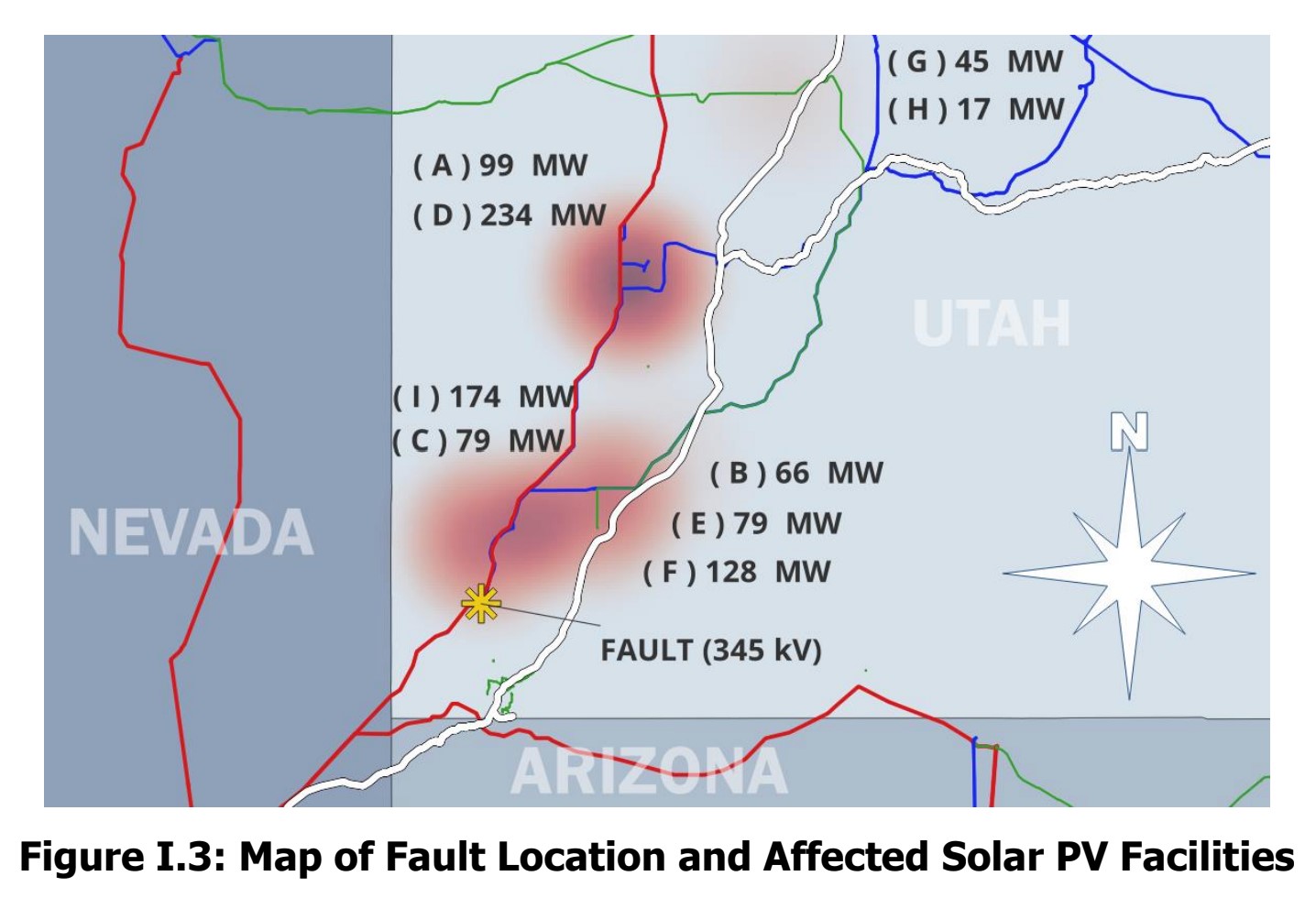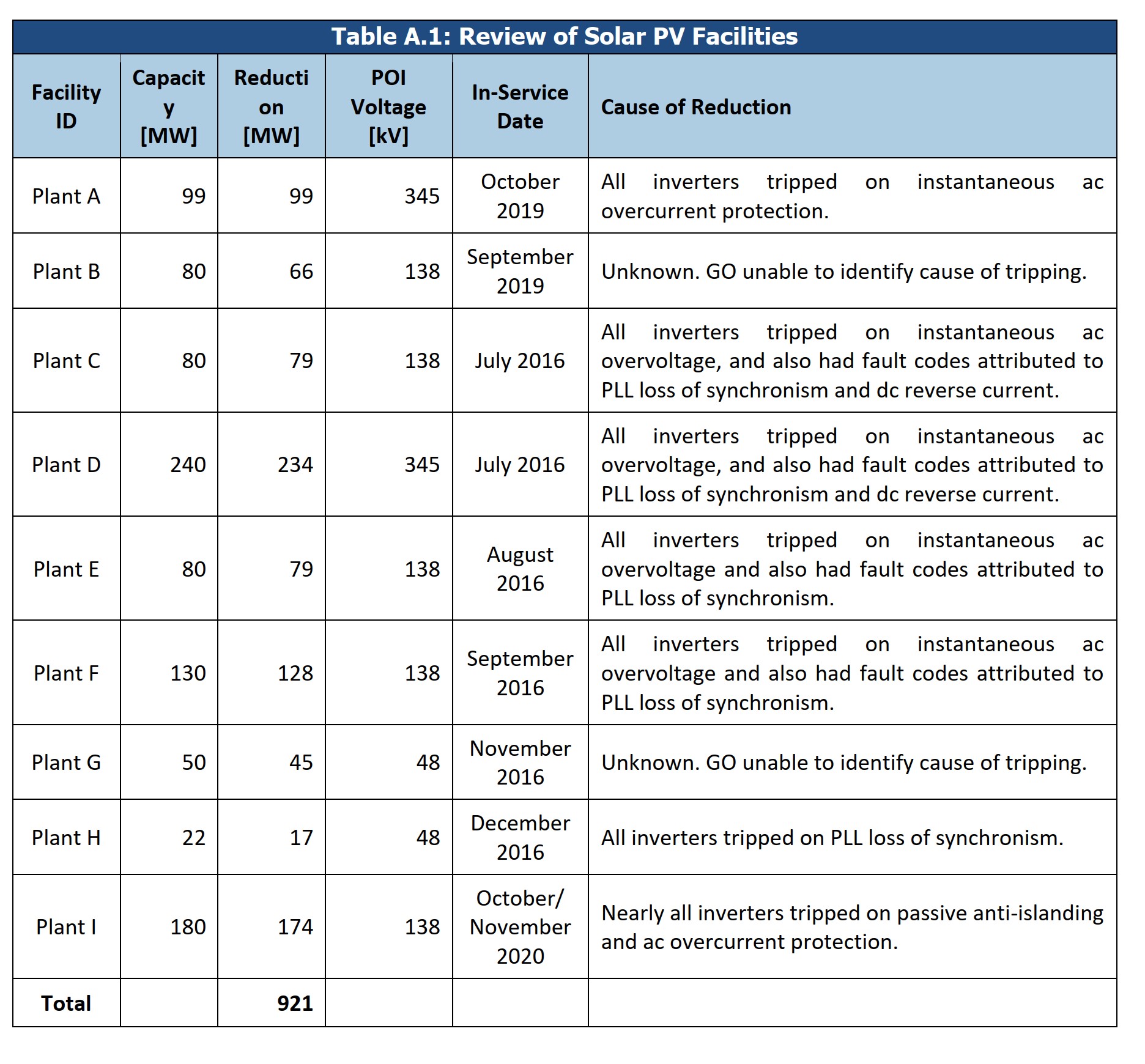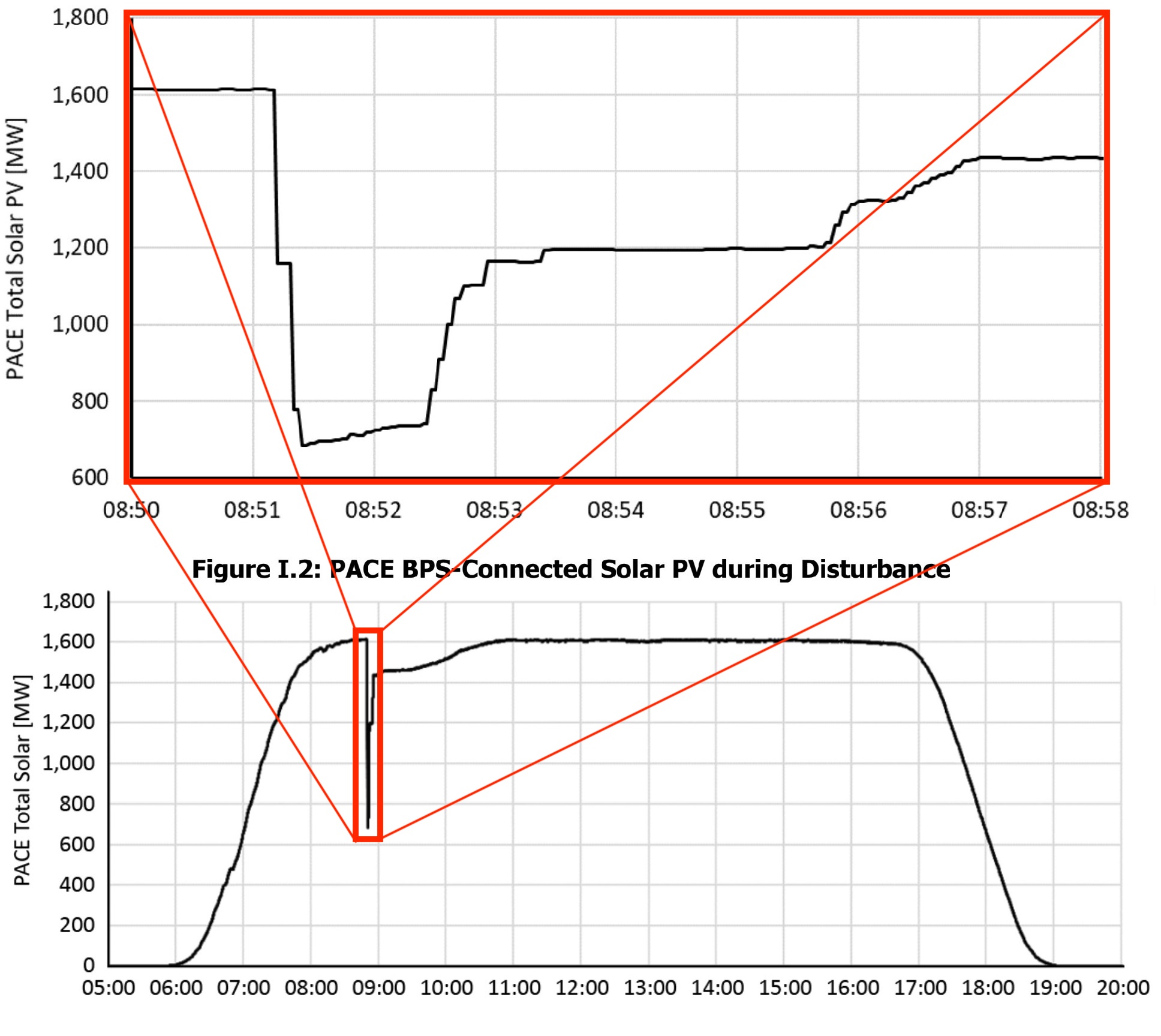On the morning of April 10, 2023, a fault in a 345 kV transmission circuit led to a sudden drop of 921 MW in output from nine solar power facilities in Utah. The power grid rectified the fault within 3.5 cycles, or approximately six hundredths of a second. While most plants returned to their initial output within minutes, one remained offline and several took up to five minutes to recover.

Any power loss exceeding 10 MW requires reporting to the North American Electric Reliability Corporation (NERC). The organization categorized the 921 MW loss as a Category 1i event under its event analysis process.
According to NERC’s 2023 Southwest Utah Disturbance analysis, many of the affected plants began commercial operations around 2016. This suggests that similar latent issues could plague a significant portion of Utah’s solar power infrastructure. A variety of factors contributed to these failures. One facility tripped due to inverter instantaneous AC overcurrent protection, suggesting inner current control issues. Two other facilities went offline for unknown reasons, later attributed to “poor data retention and/or quality.” Additionally, several plants experienced faults due to multiple inverter issues, including phase lock loop loss of synchronism, instantaneous AC overvoltage, and DC reverse current protection.
Disturbingly, these issues are not new. NERC had previously identified similar performance abnormalities in Texas and California, but generation operators (GOs) and original equipment manufacturers (OEMs) have not taken decisive action to mitigate these known risks.

Of the nine affected inverters, seven were manufactured by TMEIC, one by Advanced Energy and one by Sungrow. The Sungrow facility went offline due to anti-islanding protections, which NERC advises should not be enabled on utility-scale solar facilities.
NERC has long advocated for a performance-based ride-through standard to ensure generators remain connected to the bulk power system during disturbances. However, its Project 2020-027, aimed at replacing the outdated PRC-024-3 standard, remains a “work in progress”.
According to NERC, one alarming issue is the discrepancy between what GOs report and what OEMs document. For example, the protections one facility reported were different from those recorded by the OEM during the commissioning process. This means the GOs did not actually implement the interconnection requirements they are obligated to report on.

NERC notes that most required changes involve simple adjustments to existing inverter settings or can be updated easily via firmware.
As the energy grid grows more reliant on inverter-based resources like solar and wind, the industry can’t afford to ignore these latent performance issues. For example, Australia’s ambitious move toward renewables is leading the shift to “grid-forming” inverters, which are poised to become the new backbone of the power grid. These electronic devices are set to replace the mechanical spinning masses that have stabilized our power grids for over a century.
This content is protected by copyright and may not be reused. If you want to cooperate with us and would like to reuse some of our content, please contact: editors@pv-magazine.com.








By submitting this form you agree to pv magazine using your data for the purposes of publishing your comment.
Your personal data will only be disclosed or otherwise transmitted to third parties for the purposes of spam filtering or if this is necessary for technical maintenance of the website. Any other transfer to third parties will not take place unless this is justified on the basis of applicable data protection regulations or if pv magazine is legally obliged to do so.
You may revoke this consent at any time with effect for the future, in which case your personal data will be deleted immediately. Otherwise, your data will be deleted if pv magazine has processed your request or the purpose of data storage is fulfilled.
Further information on data privacy can be found in our Data Protection Policy.